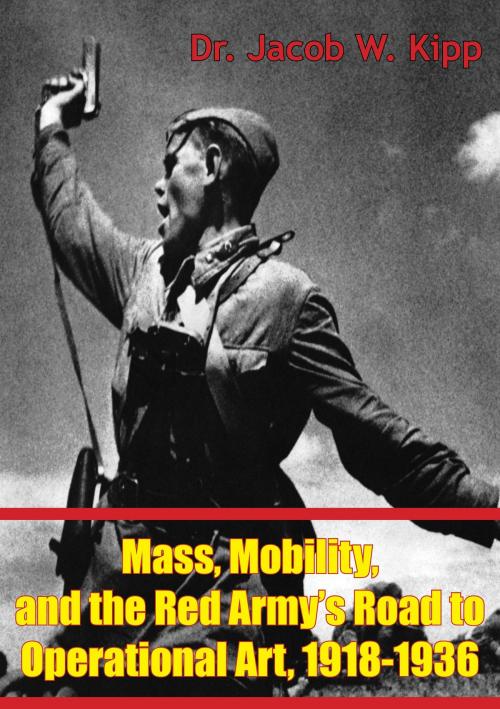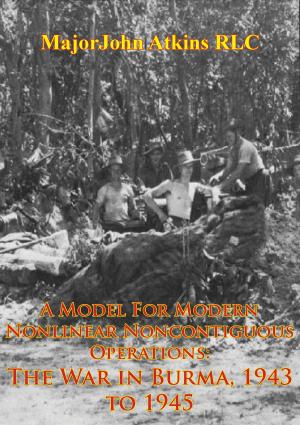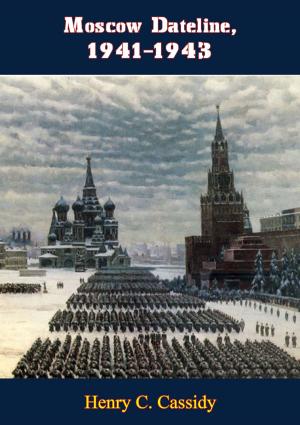Mass, Mobility, And The Red Army’s Road To Operational Art, 1918-1936
Nonfiction, History, Germany, European General, Military, United States| Author: | Dr. Jacob W. Kipp | ISBN: | 9781786250599 |
| Publisher: | Verdun Press | Publication: | November 6, 2015 |
| Imprint: | Verdun Press | Language: | English |
| Author: | Dr. Jacob W. Kipp |
| ISBN: | 9781786250599 |
| Publisher: | Verdun Press |
| Publication: | November 6, 2015 |
| Imprint: | Verdun Press |
| Language: | English |
The first requirement for this paper is to deal with the problem of exactly what we mean by the three terms employed in the title. Mass in the Russian context has a double meaning. To some it unquestionably calls to mind the image of the Russian steamroller, which provided nightmares of Schlieffen and his planners in the decades before World War I. A simple process of extrapolation based upon the size of Russia’s standing army, the number of conscripts being inducted in any year under the universal military service statute, and the Empire’s total population provided a rough estimate of the total number of rifles and bayonets which the tsar could put into the field. The tsarist government’s adoption of the Grand Program for rearmament in 1912 thus threatened to change the military balance on the continent. Those forces would mobilize slowly, but, like a steamroller, their momentum would carry all before them.
The first requirement for this paper is to deal with the problem of exactly what we mean by the three terms employed in the title. Mass in the Russian context has a double meaning. To some it unquestionably calls to mind the image of the Russian steamroller, which provided nightmares of Schlieffen and his planners in the decades before World War I. A simple process of extrapolation based upon the size of Russia’s standing army, the number of conscripts being inducted in any year under the universal military service statute, and the Empire’s total population provided a rough estimate of the total number of rifles and bayonets which the tsar could put into the field. The tsarist government’s adoption of the Grand Program for rearmament in 1912 thus threatened to change the military balance on the continent. Those forces would mobilize slowly, but, like a steamroller, their momentum would carry all before them.




![Cover of the book Marines In World War II - The Assault On Peleliu [Illustrated Edition] by Dr. Jacob W. Kipp](https://www.kuoky.com/images/2014/august/300x300/9781782892854-ST4R_300x.jpg)


![Cover of the book The Fifth Army In March 1918 [Illustrated Edition] by Dr. Jacob W. Kipp](https://www.kuoky.com/images/2014/august/300x300/9781782894834-9qa1_300x.jpg)


![Cover of the book The History Of The Canterbury Mounted Rifles 1914-1919 [Illustrated Edition] by Dr. Jacob W. Kipp](https://www.kuoky.com/images/2014/june/300x300/9781782892465-b3yA_300x.jpg)

![Cover of the book NEW ZEALAND DIVISION 1916-1919. The New Zealanders In France [Illustrated Edition] by Dr. Jacob W. Kipp](https://www.kuoky.com/images/2014/june/300x300/9781782892427-VkWo_300x.jpg)

![Cover of the book A War of Their Own: Bombers Over the Southwest Pacific [Illustrated Edition] by Dr. Jacob W. Kipp](https://www.kuoky.com/images/2014/august/300x300/9781782899266-HdAC_300x.jpg)
